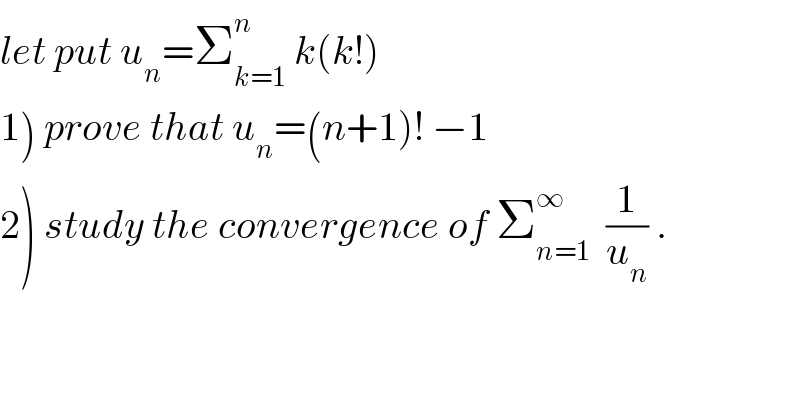
Question and Answers Forum
Previous in Relation and Functions Next in Relation and Functions
Question Number 32273 by abdo imad last updated on 22/Mar/18

Commented by abdo imad last updated on 25/Mar/18

Answered by Tinkutara last updated on 23/Mar/18
![u_n =Σ_(k=1) ^n (k+1−1)(k!) u_n =Σ_(k=1) ^n [(k+1)!−k!] It telescopes and becomes u_n =(n+1)!−1](Q32315.png)
